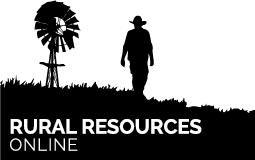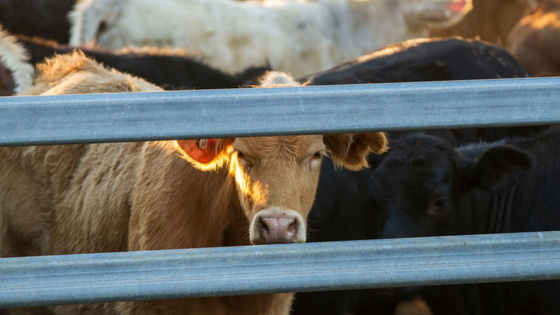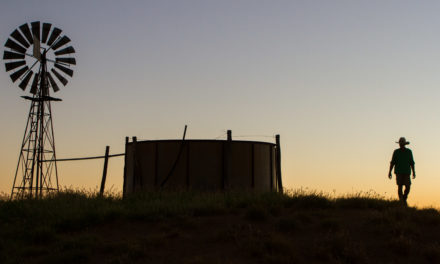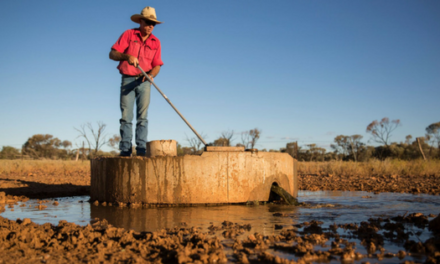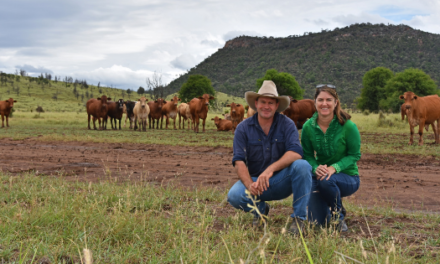The 1st October 2017 is an important date for cattle producers in Australia with changes to the LPA program. Producers must take action to be able to access future NVDs (National Vendor Declaration).
Currently, if you use a NVD you are part of the LPA (Livestock Production Assurance) program, because you completed an online questionnaire. LPA is an independently audited on-farm assurance program. The LPA NVD is the main document that demonstrates Australia’s commitment to producing safe red meat.
Consumer trends are changing and expectations are increasing. Adequate biosecurity risk management and animal welfare standards are becoming as important as knowing the meat is safe.
In response to the need to keep our high standards to transparency there are now additional requirements for producers wanting to continue to use the LPA NVD to sell cattle. A new online accreditation system is being rolled out. Additional questions must be answered and a fee of $66 will be charged for a three year LPA accreditation.
A mandatory requirement from 1st October 2017 will be a Biosecurity Management Plan
Property owners must have a biosecurity management plan for their PIC (Property Identification Code). This is when the new national approach to Bovine Johne’s Disease (BJD) will take full effect. It’s important for all affected producers to be on top of the changes and to understand how the new framework will impact their ability to trade both locally and interstate.
The new requirements will replace the previous zones (‘free’, ‘protected’, etc) classifications.
The new BJD framework focuses on managing your on-farm biosecurity risk rather than just controlling the spread of the disease through regulation and quarantine, as it has in the past, and is achieved through a new system called the Johne’s Beef Assurance Score (J-BAS).
Completing a National Cattle Health Declaration to support the NVDs will also be new to most red meat producers. Unfortunately, there are no plans to modify the NVD format to incorporate the JBAS score and therefore this additional declaration is required with each consignment.
What is Bovine Johne’s Disease (BJD)?
Bovine Johne’s Disease(BJD) is a chronic, incurable wasting disease that affects various animal species including cattle, sheep goats, deer and camelids. Symptoms include diarrhoea, reduced milk production, weight loss and eventually death.
In some production areas of Australia BJD is endemic. In other areas the disease is not known to exist or does so at a very low level.
What causes Bovine Johne’s Disease (BJD)?
Bovine Johne’s Disease(BJD) is caused by the bacteria Mycobacterium paratuberculosis, which live mainly in the animal intestines but can survive in the outside environment for months.
Why is the new BJD framework taking effect in Australia from the 1st October 2017?
A Reference Group that met in Canberra in September 2015 and reviewed the previous long-standing approach to the management of Johne’s disease (JD) in cattle.
It was identified that change was needed because of evolving practices, reduced funding and the growing influence of biosecurity considerations.
Animal Health Australia “identified that there was a groundswell of support for JD to be dealt with differently from the way in which it has been over the past 12 years. There was general support for JD to be addressed under a common biosecurity approach for endemic diseases, with less emphasis placed on an individual disease. “
The resulting move away from state based legislation to property level risk based management of the disease involves a requirement for a biosecurity management plan to be in place.
What is the new BJD framework taking effect in Australia from the 1st October 2017?
The new BJD framework focuses on managing your on-farm biosecurity risk rather than just controlling the spread of the disease through regulation and quarantine, as it has in the past, and is achieved through a new system called the Johne’s Beef Assurance Score (J-BAS).
Animal Health Australia state the new framework “transfers the responsibility for managing the risk of JD (and other diseases) from government agencies to individual producers.”
What is the Johne’s Beef Assurance Score (J-BAS)?
The Johne’s Beef Assurance Score, J-BAS, is a risk profiling tool that has been developed as part of the new framework. It is used as a guide to assist producers in assessing the risk of bringing BJD into their herd and to encourage them to seek further information about the health status of animals that they are looking to introduce onto their property.
There are 4 options going forward:
Levels and steps are
J-BAS 6 Confirmed requirement for entry into NT. This Level will be the majority of clients. It requires a bio-security plan held on farm. (Basic minimum requirement. This will also be a requirement for your LPA accreditation as at OCT 17). This will also be the required level for entry into shows etc.
J-BAS 7 1. A bio-security plan implemented by the 30th September 2017 overseen by a veterinarian
- A triennial check test of 50 animals with the first test to be completed by 30th June 2018.
This is the minimum requirement for entry into WA. (The only exception will be that you have to do your check test every year to entry WA)
J-BAS 8 Highest status. Check tests of 250-300. Similar to old MN3. Only stud clients and very few of them.
And J-BAS 0 is described as “suspect, infected or unknown” in relation to BJD.
Be aware, if you drop to J-BAS 0 it could take you 5 years at potentially significant expense to get back to J-BAS 6, 7 or 8 status.
The requirements on red meat producers from 1st October 2017
- Complete a biosecurity plan using either a downloadable template or other method
- Keep a copy of the biosecurity plan, preferably in both electronic and hard copy and manage it as a fluid document
- Set up a simple process to be able to issue a copy of your plan if requested as proof of your level 6 or above JBAS score
- Complete both a NVD and National Cattle Health Declaration to send with all consignments of stock sold
- As JBAS scores are herd based, manage all different JBAS stock as separate herds. For example if you have a stud operation with a level 7 score and also have commercial livestock with a score 6, you must manage the groups as two separate herds
- If you bring lower status cattle onto your property and run them with your existing livestock you will be lowering your JBAS property score to the lower status.
- Talk to your agistment provider and ensure they have a biosecurity management plan
- Contact your veterinarian if you are seeking a JBAS of 7 or 8
Industry benefits from changes to the LPA system
There is no doubt the changes are an imposition for most primary producers. Moving forward however, Industry bodies who advocate on behalf of Australian agriculture need proof the industry is meeting consumer and regulatory requirements.
At a business level it is important to be able to demonstrate how risk is mitigated within an enterprise. Unfortunately, there are times when things go wrong. Having a plan in place makes responding easier and is better to focus on this benefit than the frustration of having yet another thing forced upon you.
Farm level requirements to comply with biosecurity changes
There is work to do. Whilst most of the reporting will be to document what is currently being done to mitigate risks, for many producers completing a biosecurity management plan it will create a to-do list of jobs. Such tasks could include:
- requesting wash-down certificates from roo shooters
- fencing off dumps
- fencing around infrastructure including houses and outbuildings
- improving treatment records including vaccination batch numbers
- not allowing visitors vehicles to drive around your property
- Contact neighbours and record their JBAS status.
If your neighbours are unaware of the requirements pass on what you know and offer assistance if the process seems quite overwhelming for them. The reality is some beef producers do not use computers or have had little need to modify their systems in the past. This is when a kind word will make all the difference.
Useful links
Some useful background information can be found on the following website pages:
https://www.animalhealthaustralia.com.au/jd-cattle-tools/
The On-farm biosecurity plan template, which incorporates the JD Biosecurity Checklist, has been developed for producers to use for this purpose (fillable form, best opened in Google Chrome). This meets the national industry minimum standards of the National Farm Biosecurity Reference Manual – Grazing Livestock Production.
Biosecurity form
Cattle Health Dec
The Animal health statements can be found at –
http://www.farmbiosecurity.com.au/toolkit/declarations-and-statements/
Biosecurity signage can be purchased directly from the farm biosecurity website.
They are $40 each.
http://www.farmbiosecurity.com.au/buy-a-gate-sign/
https://www.animalhealthaustralia.com.au/new-approach-jd-cattle/
The following link provides some scenarios for cattle going from state to state:
https://www.animalhealthaustralia.com.au/jd-cattle-case-studies-scenarios/
